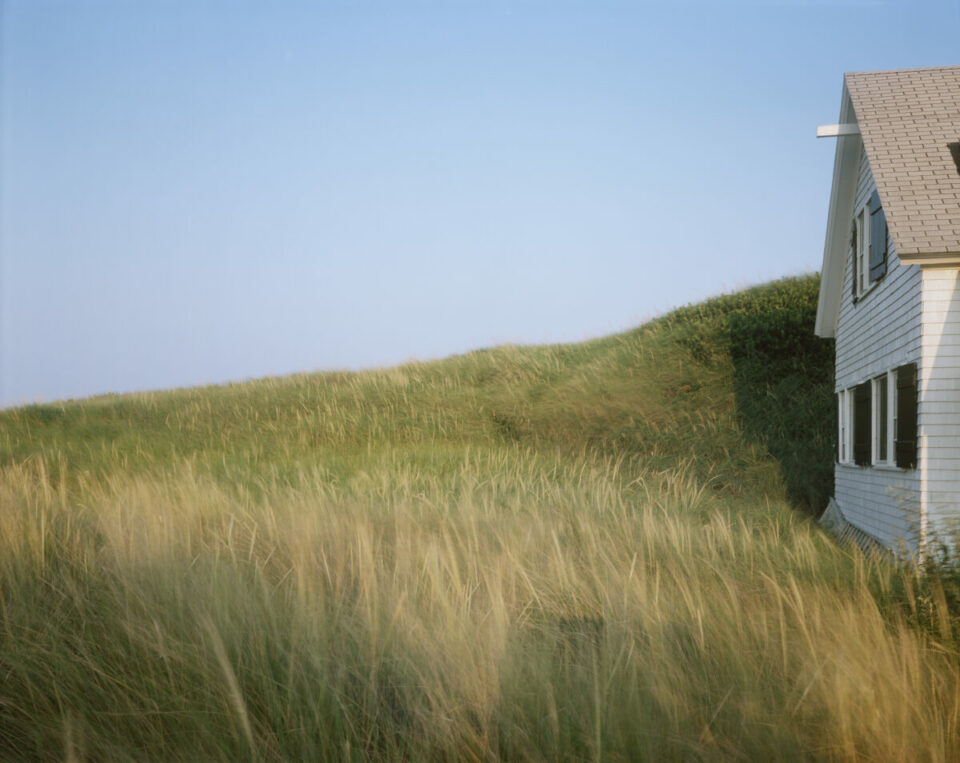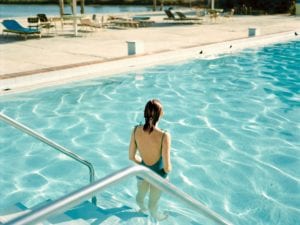“Colour plays itself out along a richer band of feelings: more wavelengths, more radiance, more sensation.” These are the words of American photographer Joel Meyerowitz (b. 1938), renowned for his vibrant urban landscapes of America and beyond. Instantly recognisable, Meyerowitz’s mesmerising, otherworldly palette has marked him as a pioneer of colour photography alongside creatives such as William Eggleston (b. 1939) and Stephen Shore (b. 1947). Now, a survey of work between 1964 to 2011 is on view at Huxley-Parlour, London. The exhibition, which coincides with the nearby Meyerowitz show at Tate Modern, investigates the photographer’s use of colour through paired ‘relational’ images. The display pays attention to coastal and urban environments with a focus on the interconnection between nature and humans.

Pictures are put in conversation with each other according to tone, light or composition, combining well-known imagery with early work as well the seminar series Cape Light (1979). Here, images such as Longnook Beach (1983) collide with Dune Grass House (1984). In the first picture, an aerial shot captures a great expanse of sea. The smooth surface of the turquoise water stretches out, the Northwest Atlantic Ocean covering the majority of the photograph. Elsewhere, a wooden house with white slats overlooks a field, blades of wheat swaying in the wind. There’s a sense of life having slowed down.

The artist, who favours a wide format lens, has worked for over 50 years to build an oeuvre that recognises overlooked elements. In Fire, France (2011), flames burn toward the sky. It’s a striking shot, the blaze caught mid-burn. The artist explains, “We all experience it. Those moments when we say, Oh, look at that. Maybe it’s nothing more than the way a shadow glides across a face, but in that split second, when you realise something remarkable is happening and disappearing in front of you, if you can pass a camera before your eye, you’ll tear a piece of time out of the whole, and in a breath, rescue it and give it new meaning.”

Huxley-Parlour says, “Historically, where black and white photography was understood to be a serious medium, colour was widely considered to be technically inferior and aesthetically limiting – occupying the realm of advertising campaigns, television, and personal holiday photographs.” The resulting exhibition shows a profound understanding of photography’s emotional and conceptual dimensions. In a select few images, it showcases the delicate balance between observation and storytelling.
Joel Meyerowitz: Dialogues | Until 2 March
Image Credits:
Joel Meyerowitz ©, Dune Grass House, Truro, Massachusetts, 1984
Joel Meyerowitz ©, Longnook Beach, Truro, Massachusetts, 1983
Joel Meyerowitz ©, The Elements: Fire, France, 2011
Joel Meyerowitz ©, Provincetown, Massachusetts, 1983




